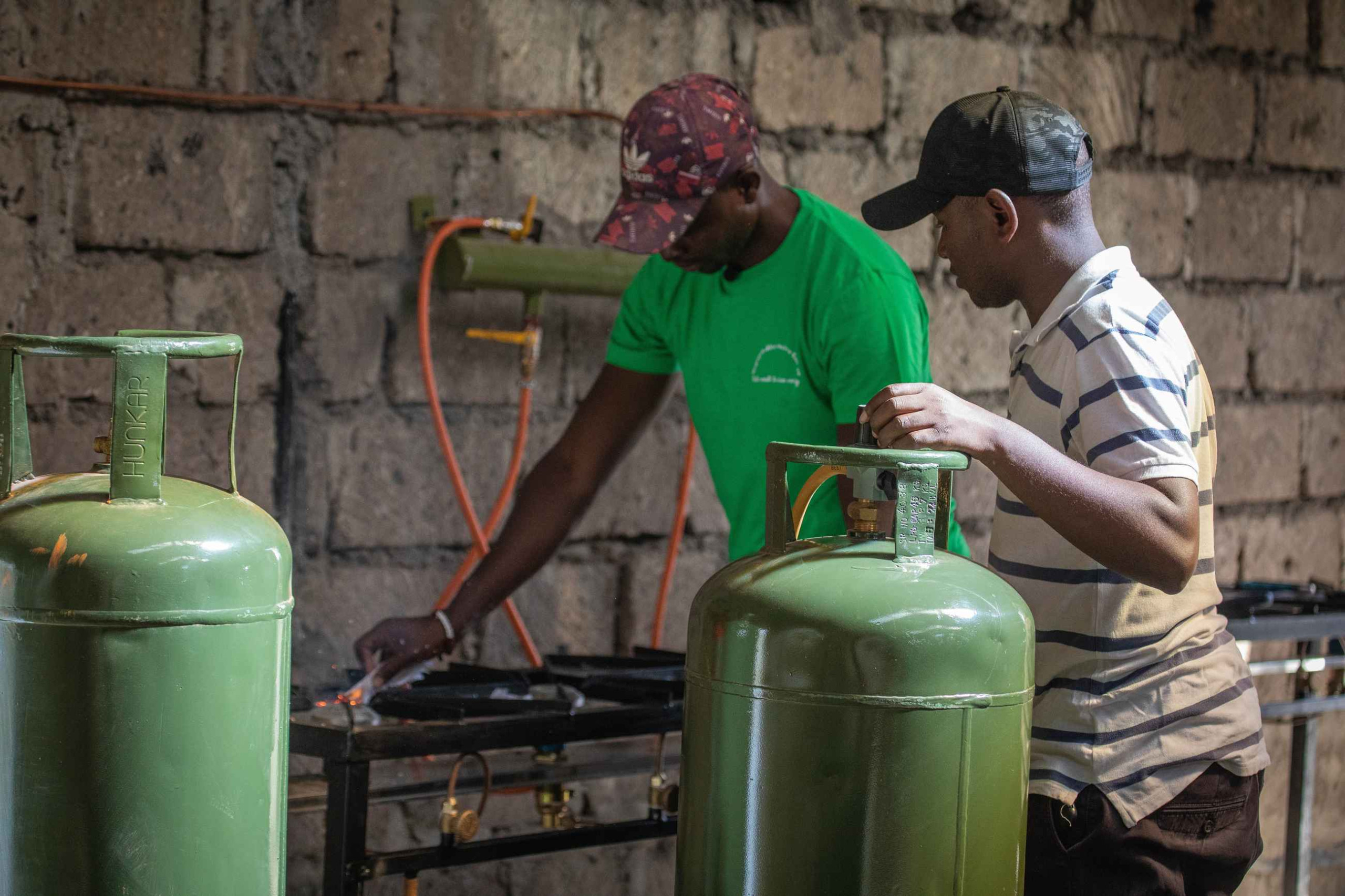Although Kenya is viewed by many as Africa’s emerging renewable superpower, it still struggles to secure affordable electricity to all its over 53 million people. The country has built the largest solar plant in the region and the largest wind plant on the continent, and has recently been working on a geothermal plant, with 87% of its electricity needs being met from renewable sources. Nevertheless, about 18 million people still lack access to electricity.
Kenya, like other African countries, grapples with high energy costs that can be attributed to a weak currency and the unpredictability of global fuel prices. Last year, according to Global Petrol, the country ranked 12th in having the costliest fuel in Africa. The worst hit are Kenya’s less well-off and jobless citizens.
High electricity costs hinder low-income communities, mostly in urban areas, from using clean energy, particularly when it comes to cooking. They resort to using kerosene, wood or charcoal which, albeit cheaper, pollute the atmosphere and cause respiratory problems.
Having spotted the disparities in Kenya’s energy sectors, upcoming innovators are developing clean energy solutions that provide cheap energy which is tailored to low income communities by using plastic or biodegradable waste and converting this into energy. After conversion, the energy is sold at a lower cost than that for fuel produced by established industries.
In Kenya, 67% of the population cooks with firewood and charcoal which contribute to indoor air pollution (IAP). According to Ministry of Health data, around 23,000 Kenyans die annually and prematurely due to IAP. Women and children are the most affected since they spend more time at home and consequently are exposed to pollutants such as carbon monoxide and nitrogen oxides that are produced by the combustion of woody biomass. The common health problems caused by IAP include respiratory illnesses, cancer and cardiovascular disease.
Mega Gas is a clean energy enterprise that produces low cost clean energy by converting discarded and non-biodegradable plastic waste like polythene into cooking gas and petrol and superfine petrol. The gas is packaged into 6-kilogram cylinder and costs 600 Kenya shillings, about $4.15 which is about 50% cheaper than gas sold by established energy companies. Peter Mwangi Njeri, Mega Gas CEO, grew up in a Soweto slum in Nairobi in a family of nine. Growing up in a poor household, his mother cooked for them in a smoky kitchen using fuel wood and respiratory issues were common. Those experiences inspired him to find ways of turning easily available plastic waste into clean energy. The company has also developed a community kitchen where low income households pay $0.2 per hour to cook there.

Innovators are also tapping into invasive plants such as the water hyacinth weed and the prickly pear cactus (opuntia stricta) to produce cheap clean energy. The hyacinth weed which, since the 1990s has choked Lake Victoria and hindered fishing activities, is harvested, shredded and turned into biogas that is then used by about 50 households at Dunga Beach in Kisumu County. Locals love to use this fuel since, unlike wood or charcoal, it does not produce smoke. In Laikipia County, cactus was introduced in 1949 by the British as live fencing but today it is an invasive plant that encroaches on grazing land and is a threat to elephants and other wildlife. Animals that eat the fruit are pricked by tiny thorns which causes infections or death. To limit the spread, the cactus is harvested by the local community, shredded and turned into biogas and fertilizer at Loisaba Conservancy.
As a progressive economy, Kenya attracts foreign funding including for the energy sector and, as the world shifts to clean energy, the country is receiving the relevant funds. In February 2024, the country received US$70 million from the Climate Investment Funds (CIF) to facilitate the integration of renewable energy into the Kenyan grid, and to enable the country to transition to using 100% clean energy by 2030. While this is a positive development, it will take time before the impact is felt at the grassroots where the majority of low-income households exist. This is why funding clean energy start-ups like Mega Gas will ensure that a more immediate positive impact is made.
Organizations such as the Kenya National Innovation Agency and the Kenya Climate Innovation Center (KCIC) fill any gaps by funding or incubating clean energy start-ups so that they are successful in the long term. In return, the start-ups create job opportunities along their clean energy value chain. According to KCIC data, 20,000 jobs have been created by the start-ups it has supported.
Funding clean energy start-ups creates immediate impact since there is no bureaucracy involved to delay implementation unlike government funded clean energy projects that take more time to implement.

